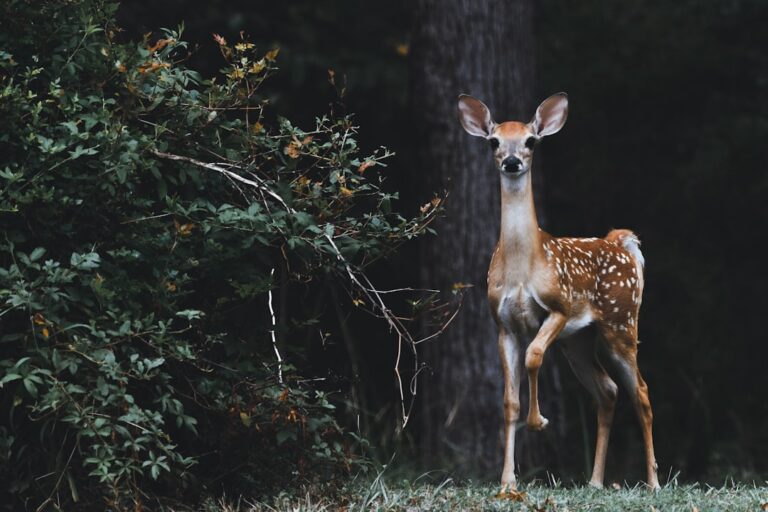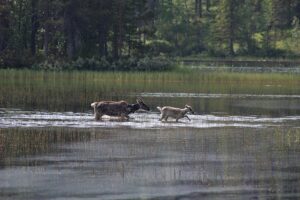Animal behavior is a fascinating field of study that encompasses the myriad ways in which animals interact with their environment, other species, and each other. This discipline draws from various scientific domains, including ethology, ecology, psychology, and evolutionary biology, to understand the underlying mechanisms that drive behavior. The study of animal behavior not only provides insights into the lives of individual species but also reveals the intricate web of interactions that sustain ecosystems.
By examining behaviors ranging from simple reflexes to complex social interactions, researchers can glean valuable information about the evolutionary pressures that shape these actions. The exploration of animal behavior is not merely an academic pursuit; it has profound implications for conservation efforts, animal welfare, and our understanding of human behavior. For instance, studying social structures in animal groups can inform strategies for preserving endangered species by highlighting the importance of social bonds and group dynamics.
Furthermore, understanding the cognitive abilities of animals can lead to better practices in captivity and enhance our appreciation for the intelligence present in non-human species. As we delve deeper into the various aspects of animal behavior, we uncover a rich tapestry of life that challenges our perceptions and invites us to reconsider our place within the natural world.
Key Takeaways
- Animal behavior encompasses a wide range of activities and interactions within the animal kingdom.
- Communication and social structure play a crucial role in the dynamics of animal groups, influencing their behavior and interactions.
- Foraging and hunting behaviors are essential for the survival of many animal species, shaping their daily routines and strategies for obtaining food.
- Reproductive strategies and mating rituals vary greatly among different animal species, often influenced by factors such as competition and mate selection.
- Territoriality and aggression are common behaviors in the animal kingdom, often serving as mechanisms for resource defense and social hierarchy.
Communication and Social Structure in Animal Groups
Communication is a cornerstone of social interaction among animals, serving as a vital mechanism for conveying information about food sources, danger, and reproductive status. Different species have evolved unique communication methods tailored to their environments and social structures. For example, the complex vocalizations of dolphins are not only used for echolocation but also for social bonding and coordination within pods.
Similarly, the intricate dances of honeybees communicate the location of nectar sources to fellow hive members, showcasing a sophisticated form of symbolic communication that is both efficient and effective. Social structures within animal groups can vary dramatically, from solitary hunters to highly organized colonies. In primate societies, such as those observed in chimpanzees and bonobos, social hierarchies play a crucial role in determining access to resources and mating opportunities.
These hierarchies are often maintained through intricate social behaviors, including grooming and alliances, which reinforce bonds among individuals. In contrast, species like elephants exhibit matriarchal structures where older females lead herds, drawing on their extensive knowledge of migratory routes and water sources. Such social dynamics not only influence individual behaviors but also impact the survival and reproductive success of entire populations.
Foraging and Hunting Behaviors

Foraging behaviors are essential for survival, as they dictate how animals acquire food in their respective habitats. The strategies employed can vary widely based on ecological niches and available resources. For instance, some species exhibit opportunistic foraging, where they take advantage of whatever food sources are readily available.
Raccoons are notorious for their adaptability; they can thrive in urban environments by scavenging from human refuse while also hunting small animals or foraging for fruits and nuts in more natural settings. Conversely, specialized hunting techniques can be observed in predators like wolves and orcas. Wolves often hunt in packs, utilizing cooperative strategies to take down larger prey such as elk or deer.
This teamwork not only increases their chances of a successful hunt but also allows them to share the energy demands of chasing and capturing prey. Orcas, on the other hand, display remarkable intelligence in their hunting methods; they employ techniques such as beaching themselves to catch seals or creating bubble nets to corral fish. These sophisticated foraging strategies highlight the adaptability and ingenuity of animals in their quest for sustenance.
Reproductive Strategies and Mating Rituals
| Species | Reproductive Strategy | Mating Ritual |
|---|---|---|
| Elephant | Sexual reproduction | Males compete for access to females |
| Honeybee | Asexual reproduction (parthenogenesis) | Queen bee mates with drones in mid-air |
| Peacock | Sexual reproduction | Male displays its colorful tail feathers to attract females |
Reproductive strategies are critical for the continuation of species and can vary significantly across the animal kingdom. These strategies encompass a range of behaviors related to mate selection, courtship rituals, and parental investment. In many bird species, elaborate mating displays are integral to attracting partners.
The peacock’s extravagant tail feathers serve as a visual signal of fitness; females often choose mates based on the size and vibrancy of these feathers, which indicate genetic quality. In contrast to the elaborate courtship rituals seen in some species, others adopt more straightforward approaches to reproduction. For example, many fish engage in external fertilization, where females release eggs into the water while males simultaneously release sperm.
This method can lead to high offspring numbers but offers little parental care afterward. Conversely, species like seahorses exhibit unique reproductive roles; males carry fertilized eggs in a pouch until they hatch, showcasing a fascinating reversal of traditional gender roles in parental investment.
Territoriality and Aggression
Territoriality is a common behavior observed in many animal species, serving as a means to secure resources such as food, mates, and nesting sites. Animals establish territories through various methods, including vocalizations, scent marking, and physical displays of aggression. For instance, male songbirds often sing loudly to announce their presence and deter rivals from encroaching on their territory.
This vocal display not only serves as a warning but also attracts potential mates by signaling the singer’s fitness. Aggression can manifest in different forms depending on the context and species involved. In some cases, aggression is a direct response to competition for resources; for example, male deer engage in fierce battles during mating season to establish dominance and secure breeding rights with females.
However, aggression is not solely about physical confrontations; it can also involve displays intended to intimidate opponents without resorting to violence. Cuttlefish exhibit remarkable color-changing abilities to signal aggression or submission during encounters with rivals, demonstrating that visual communication plays a crucial role in managing conflicts.
Learning and Cognitive Abilities in Animals

The cognitive abilities of animals have garnered significant attention in recent years as researchers seek to understand the extent of intelligence across species. Learning is a fundamental aspect of animal behavior that allows individuals to adapt to changing environments and improve their chances of survival. Many animals exhibit remarkable problem-solving skills; for instance, crows have been observed using tools to extract insects from tree bark or even dropping nuts onto roads to crack them open with passing cars.
Social learning is another critical component of animal cognition. In species such as dolphins and chimpanzees, individuals learn behaviors by observing others within their social groups. This form of learning can lead to the transmission of cultural practices across generations.
For example, certain chimpanzee communities have been documented using specific tools for nut cracking that differ from those used by neighboring groups, highlighting the role of social learning in shaping behavioral traditions.
Environmental Influences on Animal Behavior
Environmental factors play a pivotal role in shaping animal behavior, influencing everything from foraging strategies to reproductive timing. Seasonal changes often dictate behavioral adaptations; many animals exhibit migratory patterns in response to shifts in temperature and food availability. For instance, Arctic terns undertake one of the longest migrations of any bird species, traveling thousands of miles between breeding grounds in the Arctic and wintering areas in Antarctica.
Habitat destruction and climate change are increasingly impacting animal behavior as well. As natural habitats are altered or fragmented due to human activities, animals may be forced to adapt their behaviors or face extinction. For example, urbanization has led some species to alter their foraging habits; raccoons have become adept at scavenging in cities while avoiding human encounters.
Similarly, climate change has prompted shifts in migration patterns among various bird species as they seek suitable breeding grounds that align with changing environmental conditions.
Human Impact on Animal Behavior
The influence of human activity on animal behavior is profound and multifaceted. Habitat destruction through deforestation, urbanization, and agriculture has led to significant changes in how animals interact with their environments. Many species are forced into smaller territories or altered habitats where they must adapt their behaviors to survive.
For instance, urban-dwelling coyotes have modified their hunting strategies to exploit new food sources such as rodents attracted to human refuse. Additionally, pollution and climate change pose significant challenges that affect animal behavior on a global scale. Ocean acidification impacts marine life by altering prey availability for predators like sea turtles and seabirds.
Similarly, rising temperatures can disrupt breeding cycles for many species; amphibians may experience altered mating seasons due to temperature fluctuations that affect their reproductive cues. The consequences of these changes extend beyond individual species; they can disrupt entire ecosystems as interdependent relationships between species are altered. In conclusion, the study of animal behavior reveals a complex interplay between biology and environment that shapes how animals live and interact with one another.
Understanding these behaviors not only enriches our knowledge of the natural world but also underscores the importance of preserving biodiversity amidst growing human impacts on ecosystems worldwide.












